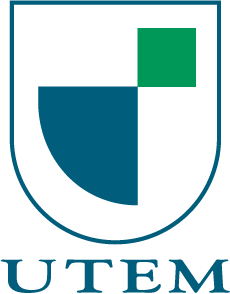Main Article Content
Jan 8, 2022
Abstract
This paper presents and empirical investigation about the productive development of the Haitian economy in the past few decades, based on the country’s trade balance and its competitiveness in the world. The UN COMTRADE database was used to carry out the competitiveness analysis. The objective is to determine the level of sophistication of the products exported by Haiti, with emphasis on the level of technological innovation used in the local industry, and its development process under the structuralistic vision of ECLAC
The analysis is supported by the Thirlwall’s law, and it is suggested that the Haitian economy needs to carry out significant changes in its productive matrix in order to stimulate its external competitiveness, as well as the need to strengthen institutionalization in the country and to bolster the industrial policies to grow and achieve economic development.

This work is licensed under a Creative Commons Attribution 4.0 International License.
References
BIRF y NU-CEPAL (1999). TradeCAN database and software for a Competitiveness Analysis of Nations: user guide. Washington, EE.UU.: ECLAC/World Bank.
Bonny, J.B. (2007). Liberalización comercial y producción de arroz en Haití. Observatorio de la Economía Latinoamericana (Nº87, octubre). En línea. www.eumed.net/cursecon/ecolat/ht/bjb-arroz.htm.
Cimoli, M., UN-ECLAC et al (2005). Heterogeneidad estructural, asimetrías tecnológicas y crecimiento en América Latina. Washington, EE.UU.: CEPAL/BID. En línea: http://socinfo.eclac.org/ddpe/noticias/paginas/1/13341/W35_CIMOLI.pdf.
Cimoli, M., Porcile, G., Primi, A. y Vergara, S. (2005). Proyecto El Reto de Acelerar el Crecimiento en América Latina y el Caribe BID 03/098. Cambio estructural, heterogeneidad productiva y tecnología en América Latina. En Cimoli, M. Heterogeneidad estructural, asimetrías tecnológicas y crecimiento en América Latina. Washington, EE.UU.: CEPAL/BID.
Enders, W. (2003). Applied econometric time series (2ª edición). Wiley Series in Probability and Statistics. New York, EE.UU.: John Wiley and Sons.
García Molina, M., Ruiz Tavera, J. K. et al (2008). Ley de Thirlwall y Modelo de Brechas: un Modelo Unificado. Documentos FCE (No 5), pp. 1-33.
Gilbert, R. y UN-ECLAC, Subregional Office in México (2004). Haití: antecedentes económicos y sociales. México, DF: Naciones Unidas/CEPAL, Desarrollo Económico.
Holland, M., Vieira, F. y Canuto, O. (2004). Economic growth and the balance-of-payments constraint in Latin America. Investigación económica Vol. 63 (No 247), p. p. 45-74.
Jayme, F. G. (2003). Balance of payments constrained economic growth in Brazil. Brazilian Journal of Political Economy Vol. 23 (No1), p.p 62-84.
Jayme Jr, F. G., Prates Romero, J. y Silveira, F. (2011). Brazil: structural change and balance-of-payments-constrained growth. CEPAL Review. En línea: http://repositorio.cepal.org/handle/11362/11545.
Ménard, C. y Shirley, M. M. (2013). “The contribution of Douglass North to new institutional economics”. Institutions, property rights and economic growth: The legacy of Douglass North. En línea: http://books.google.com/books?hl=en&lr=&id=rapkAwAAQBAJ&oi=fnd&pg=PA11&dq=%22that+from+the+beginning+it+was+divided+into+distinct+schools+of+thought.%22+%22or+even+part+of+NIE+that+we+do+not+have+space+to+cover+adequately+here.+These+include,+for%22+&ots=chdYlzNQv6&sig=UYjVX08FN_LjXI_Hk3Uj0YZ3hQM.
North, D. C. (1993). Instituciones, cambio institucional y desempeño económico. México, DF: Fondo de Cultura Económica.
NU-CEPAL. (2007). 1.División de Desarrollo Productivo y Empresarial, IDRC, y Proyecto Reestructuración Industrial, Innovación y Competitividad Internacional en América Latina, Fase II. Progreso técnico y cambio estructural en América Latina y el Caribe. Documentos de Proyectos. Santiago de Chile: CEPAL.
NU-CEPAL. 7. División de Desarrollo Productivo y Empresarial, Secretaría General Iberoamericana (2009). Innovar para crecer: desafíos y oportunidades para el desarrollo sostenible e inclusivo en Iberoamérica. Cumbre Iberoamericana de Jefes de Estado y de Gobierno, 30 noviembre-1 diciembre, Estoril. Cimoli, M. (Ed.). Santiago de Chile: CEPAL/SEGIB.
NU-CEPAL. 8. División de Desarrollo Social, Alemania. Ministerio Federal de Cooperación Económica y Desarrollo (2013), Proyecto “Strengthening social protection” (ROA/149-7) y Proyecto “Strengthening regional knowledge networks to promote the effective implementation of the United Nations development agenda and to assess progress” (ROA 161-7). Lamaute-Brisson, N. (Ed.) Social protection systems in Latin America and the Caribbean: Haiti. Documentos de Proyectos. Santiago de Chile: ECLAC.
NU-CEPAL (2012). 4.Cambio estructural para la igualdad: una visión integrada del desarrollo. Trigésimo cuarto período de sesiones de la CEPAL, 27-31 agosto, San Salvador. Síntesis. Santiago de Chile: CEPAL.
NU-CEPAL (2012). 5. Los países de renta media: un nuevo enfoque basado en brechas estructurales. Santiago de Chile: CEPAL.
NU-CEPAL (2001). 6. Países Bajos. Gobierno y Proyecto Crecimiento, Empleo y Equidad: América Latina en los Años Noventa HOL/97/6034. Reformas, crecimiento y políticas sociales en Chile desde 1973. Ffrench-Davis, R. y Stallings, B. (Eds.) Colección Ciencias Sociales. Santiago: CEPAL/Lom.
NU-CEPAL (2011). Espacios iberoamericanos: hacia una nueva arquitectura del Estado para el desarrollo. 16-17 noviembre, Cádiz. Secretaría General Iberoamericana y Cumbre Iberoamericana de Jefes de Estado y de Gobierno. Santiago de Chile: CEPAL/SEGIB.
NU-CEPAL (2012). Espacios iberoamericanos: La inversión extranjera, Oportunidades para impulsar una relación renovada. Pérez Ludeña, M., Santoleri, P., Sossdorf, F. y Stumpo, G. (Eds.) Santiago de Chile: CEPAL/SEGIB.
NU-CEPAL (2013). La inversión extranjera directa en América Latina y el Caribe, informe 2012. La Inversión Extranjera en América Latina y el Caribe. Informe. Unidad de Inversiones y Estrategias Empresariales. Santiago de Chile: CEPAL.
Romer P. (1990). “Endogenous Technological Change”. The journal of Political Economy, Vol. 98 (Nº5), part 2: The Problem of development: A Conference of the institute for the Study of Free Enterprise Systems. pp. S71-S102.
Setterfield, M. (2012). “The remarkable durability of Thirlwall’s Law”. Models of Balance of Payments Constrained Growth: History, Theory and Empirical Evidence (Nº 83).





